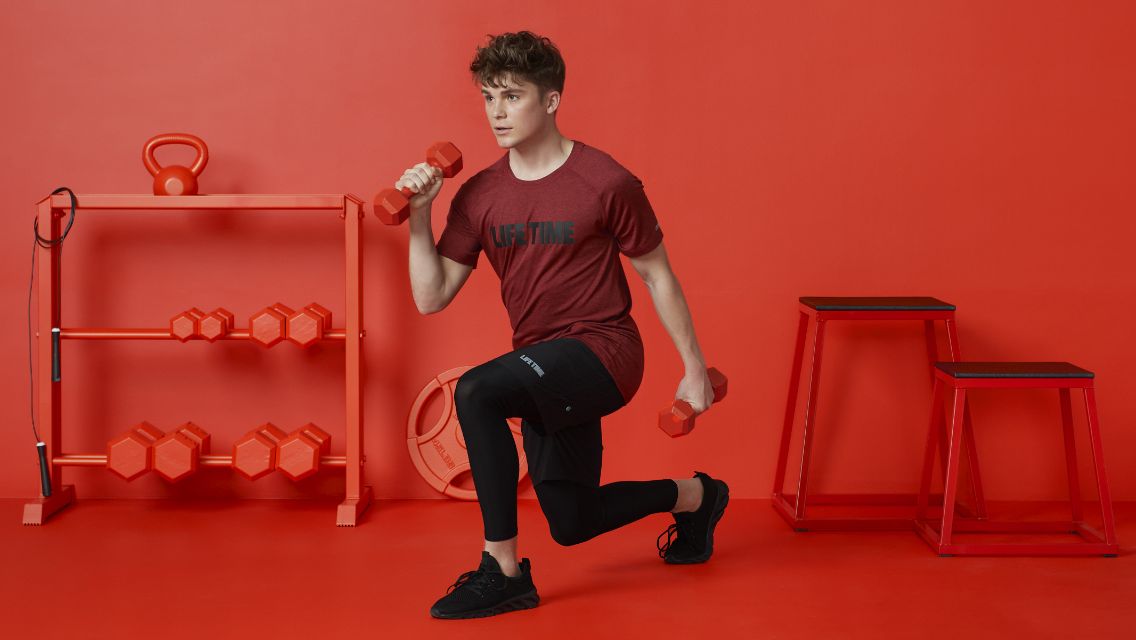Adolescence is typically defined as the period between 10 and 19 years old, but this window, physically speaking, is more about your body’s development than your biological age. “There’s a huge difference in how each person develops physically,” explains Suanne Kowal-Connelly, MD, a New York–based pediatrician, youth coach, and author of Parenting Through Puberty.
Understanding your personal physical development can help you set realistic goals and expectations for training. Consider these three pieces of advice from Kowal-Connelly and other experts as you embark on your fitness journey.
1) Embrace awkwardness.
It’s no secret that we all grow at different rates and times — and when it happens, living in a growing body can feel pretty awkward.
“You actually grow from the outside inward — you grow from your hands and feet into your core or the center. And as that happens, you can be kind of off-kilter,” explains Kowal-Connelly.
“You actually grow from the outside inward — you grow from your hands and feet into your core or the center. And as that happens, you can be kind of off-kilter.”
When changes happen rapidly, even movements you’ve been doing nearly your entire life can feel awkward, says DeVentri Jordan, founder and national director of Life Time’s GameFace training program for youth athletes. “If a kid grows 2 inches taller, everything changes, and they have to train everything all over again.”
Jordan stresses that it’s important to be patient and adjust your expectations. “I call this period the learning-to-train age. It’s not just about what you can do physically; it’s about mentally understanding how to train. This is not a race. It’s a journey.”
2) Don’t obsess over aesthetics.
Working out — and strength training in particular — offers a cascade of physical and mental rewards, benefiting every system in your body no matter your age. Most of these health boons have nothing to do with your reflection in the mirror or the number on the scale. And yet it’s common for young people to train specifically with aesthetics in mind.
While there is nothing wrong with pursuing aesthetic goals, hyperfocusing on the size and shape of your biceps, glutes, or other muscles can become problematic. For one, it can disengage you from your body and intuition, setting you up for overexercise, burnout, and injury.
An overemphasis on aesthetics can also contribute to eroding self-confidence and even lead down a path to body dysmorphia, disordered eating, and other harmful beliefs and practices, says Life Time personal trainer and strength coach Becca Rigg, NASM-CPT.
Moreover, while there is some opportunity to reshape the body through intentional, consistent strength training, each person is limited by factors like genetics and simple biology. Hypertrophy, or an increase in muscle size, depends on the amount of testosterone your body produces. All genders experience an increase in testosterone during puberty. But people assigned male at birth will experience a surge of testosterone to a much greater degree, explains Kowal-Connelly.
This means that not everyone will be able to develop muscle mass at the same rate or at the same time, even if they do all the “right” things in the gym.
As a result, aesthetic goals are tricky for teens, Rigg says. She advises shifting your focus to nonaesthetic markers, such as the new skills you’re developing and how you’re feeling.
“Strength training builds confidence and self-esteem,” she notes. “I love the message you receive when exercising in this way: You learn that even though what you’re doing may be hard, you’re getting stronger.”
3) Be patient with your body and brain.
Just before puberty, the human brain goes through a period of overproducing synapses, the connections between brain cells. This is followed by a period of pruning, during which some synapses are lost and others are strengthened.
“Your brain is working out what areas it needs to hold on to and what areas it can set aside, so there’s a lot of remodeling of the architecture inside your head,” says Kowal-Connelly.
This “remodeling” makes your teen years an excellent time to develop coordination and hardwire solid movement patterns into your system, advises Ryan McDowell, CSCS, a youth strength coach in Hopkins, Minn. “Your body doesn’t yet have the software for the things you’re about to do. At this age, it’s about developing the nervous system and the ability to coordinate.
“It doesn’t matter if you want to go hiking, play a high-level sport, or just do things around the house. The goal is to be able to move better.”
The keys to developing any new skill are patience, persistence, and practice. Be curious about anything in fitness that interests you and give your brain and body time to adapt. It’s unlikely that you’ll be great at everything the first time you try it. That’s one of the most beautiful parts about fitness: discovering what you like and then putting in the work to get better.
This was excerpted from “A Teen Fitness Guide” which was published in Experience Life.





This Post Has 0 Comments